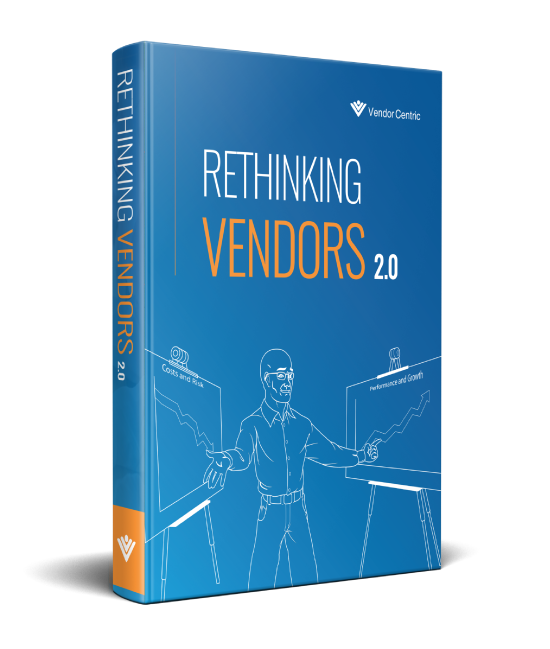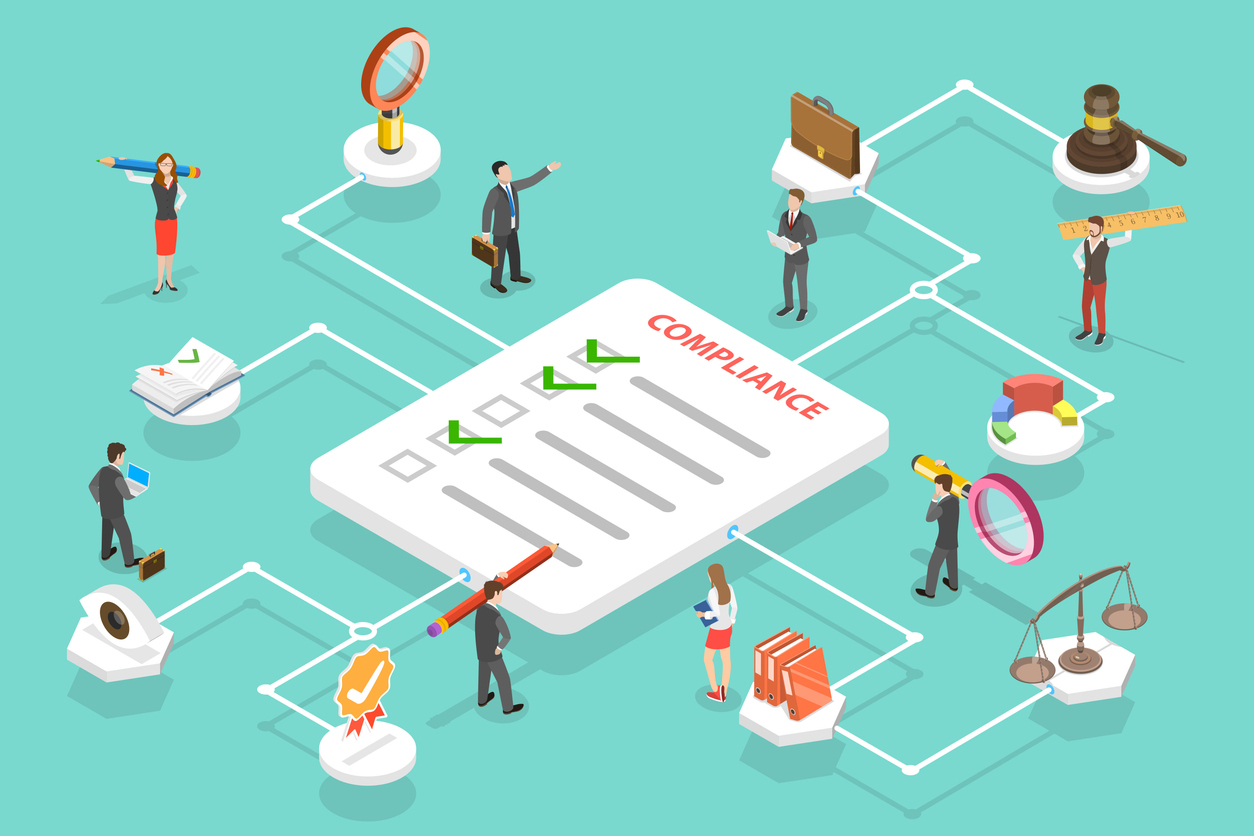Let’s face it — vendor management can get messy fast.
You’ve got multiple departments working with multiple vendors, each with their own processes, expectations, and priorities. Without structure, things fall through the cracks. Risk assessments get skipped, contracts go unmanaged, and performance issues drag on longer than they should.
That’s where a Vendor Management Office comes in.
Whether you’re just starting to think about setting one up, or you have one and want to improve it, getting clear on the role of the VMO is a smart move. Because when it’s done right, the VMO brings order to the chaos — creating a unified approach to managing vendors that reduces risk, improves outcomes, and ensures everyone is pulling in the same direction.
In this blog I break down:
Let’s dive in.
What is a Vendor Management Office?
The Vendor Management Office (VMO) is the centralized business function that defines how vendors should be managed across the organization. It sets the strategy and framework, establishes and maintains the infrastructure, and creates the conditions for consistent, accountable, and high-performing vendor relationships.
A well-designed VMO takes a holistic view of vendor management, looking across the entire vendor lifecycle – from sourcing and due diligence to contracting, performance oversight, and offboarding. Its role is to ensure that every aspect of managing individual vendors is supported by clear standards, efficient processes, and coordinated roles. That way, all stakeholders involved — procurement, legal, IT, cybersecurity, finance, and business owners — can engage vendors effectively and consistently.
To put it simply, the VMO is responsible for how vendor management should work across the organization.
What the VMO Is Not
One of the most common misconceptions is that the VMO is supposed to manage every vendor directly. In reality, the day-to-day management of vendors typically rests with business owners (the people who use the vendor’s products or services) and functional departments (such as finance, risk, or cybersecurity) that have oversight responsibilities for specific operational activities.
The VMO’s job is to align and enable these stakeholders — by putting the right policies, procedures, systems, and support in place — not to replace them.
That said, the level of involvement a VMO has can vary depending on an organization’s operating model:
- Centralized: The VMO manages most vendor-related processes directly.
- Decentralized: Business units have more control, with the VMO serving as an advisor or coordinator but decisions are left primarily to the business units themselves.
- Hybrid: A blend of both, where the VMO may take on more direct responsibility for certain vendors or activities, while others are managed locally.
No matter the model, the key is that the VMO creates structure and consistency while leveraging the expertise and engagement of people across the organization.
Core Responsibilities of the VMO
While the VMO may not handle all vendor activities directly, it plays a critical role in enabling success by putting the right foundation in place. Here are five critical areas of responsibility.
1. Establish the Vendor Management Strategy and Framework
The VMO creates the overarching ‘blueprint’ for how vendor management works across the organization. This includes setting the strategy, scope, and structure of the program — what types of vendors are included, what activities fall within the program’s reach, and what will remain outside of it.
The vendor management framework also outlines the operating model the organization will follow — whether vendor management will be centralized, decentralized, or hybrid — and defines where the VMO function sits within the organization. Just as importantly, it establishes how the program will be governed, including decision-making processes, escalation paths, and oversight responsibilities.
By clearly defining these elements up front, the framework creates alignment, eliminates ambiguity, and provides the foundation for a vendor management program that is scalable, practical, and built to meet the organization’s specific needs.
2. Build and Maintain Infrastructure
Even the best strategy can fall short without the tools to support it. That’s why the VMO is also responsible for developing and maintaining the infrastructure needed for consistent, efficient execution.
This includes:
- Documented policies and procedures
- Standardized templates, checklists, and workflows
- Technology platforms for tracking vendors, contracts, and risk
- Metrics, dashboards, and reporting mechanisms
Robust infrastructure gives stakeholders the guidance and resources they need to manage vendors effectively and stay aligned to the overall framework.
3. Align, Train, and Coordinate Stakeholders
Vendor management is inherently cross-functional. It brings together stakeholders from procurement, legal, finance, IT, information security, risk, and the business units — each with unique responsibilities and perspectives. Without alignment, it’s easy for efforts to become siloed, inconsistent, or even contradictory.
The VMO plays a central role in connecting these dots. It ensures that everyone is working from a shared framework, with clearly defined roles and responsibilities. That means coordinating how different departments contribute to core activities like onboarding, due diligence, contracting, monitoring, and offboarding — and ensuring those activities are integrated, not redundant.
But alignment alone isn’t enough. The VMO must also equip stakeholders with the tools and knowledge to execute their responsibilities effectively. This includes role-specific training, step-by-step guidance, access to standardized templates and systems, and regular communication to reinforce expectations and share updates.
4. Provide Ongoing Monitoring and Reporting of the Program
A strong VMO doesn’t just build the structure — it makes sure that structure is working. That’s where ongoing monitoring and reporting come in. The VMO is responsible for keeping a pulse on how well the vendor management program is operating across the organization.
This includes monitoring compliance with policies and procedures, assessing how consistently vendor management activities are being executed, and tracking key metrics tied to risk, performance, and value. The VMO should also facilitate regular reporting to leadership and governance bodies, giving them visibility into areas like third-party risk exposure, vendor performance trends, and policy adherence.
Just as importantly, the VMO acts on what it learns — identifying process breakdowns, gaps in adoption, or recurring issues that need to be addressed. With the right monitoring and reporting in place, the VMO moves from being a framework developer to a true driver of accountability and continuous improvement.
5. Facilitate Proactive Governance and Continuous Improvement
The best VMOs don’t just maintain the status quo — they drive the program forward.
That means creating structured governance mechanisms to keep vendor management aligned with organizational goals, risk tolerance, and compliance obligations. The VMO is typically responsible for facilitating these governance activities, which may include steering committees, policy reviews, vendor portfolio evaluations, and issue escalation protocols. These forums give leadership visibility into the state of vendor oversight and provide a channel for making informed decisions on strategic or high-risk vendor matters.
But governance isn’t just about oversight — it’s also about momentum. The VMO should take the lead in identifying opportunities to improve and evolve the program over time. This could involve streamlining processes, updating templates and tools, adopting new technologies, or responding to changes in regulatory requirements or business priorities. Continuous improvement ensures the vendor management program remains relevant, effective, and capable of supporting the organization’s long-term success.
How the VMO Adds Value
At its core, the VMO is designed to create value for the organization. But that value doesn’t come just from running processes — it comes from enabling the business to manage vendors more effectively, more strategically, and with greater consistency.
A well-functioning VMO helps reduce risk by ensuring vendors are assessed, onboarded, and monitored appropriately. It boosts performance by introducing clear standards and accountability. It improves efficiency by standardizing tools and workflows. And it supports compliance by making it easier to demonstrate internal controls and audit readiness.
More importantly, it helps the organization maximize the value of its vendor relationships — ensuring those relationships are aligned with the organization’s goals, delivering strong outcomes, and evolving over time.
For example, a VMO that brings together procurement, cybersecurity, and the business owner to streamline onboarding for a high-risk IT vendor can reduce approval time, mitigate risk, and get the vendor delivering value faster — all while maintaining transparency and accountability.
Tips for Building or Maturing Your VMO
Whether you’re building a Vendor Management Office from the ground up or looking to take an existing one to the next level, success starts with having a clear, intentional approach. VMOs can look very different from one organization to the next — and that’s okay. What matters most is designing a structure that fits your organization’s goals, resources, and risk profile.
The tips below highlight three foundational strategies that can help guide your efforts — whether you’re in the early stages or refining a mature program. They focus on clarity, prioritization, and change management — all critical ingredients for building a VMO that delivers real, measurable value.
1. Be Clear on Your Scope of Operations
Start by ensuring you are clear as to what falls within the VMO’s scope — and what doesn’t. Will the VMO be responsible for direct vendor oversight, or just governance and support? Will it focus on certain vendor types (e.g., high-risk, IT vendors) or span the entire supply base?
Clarifying your scope will help you determine what kind of infrastructure you need, what policies to develop, and how to structure governance. It also ensures your VMO is right-sized for your organization’s needs and resources.
2. Use a Risk-Based Approach
You don’t need to tackle everything at once. Begin with the vendors that carry the most risk or deliver the most critical services. Focus your policies, tools, and oversight mechanisms there, and then scale out over time.
This approach allows you to demonstrate value quickly while managing your resources effectively — and it aligns with how regulators and auditors often expect vendor risk to be prioritized.
3. Implement a Change Management Strategy
Standing up a VMO isn’t just about policies and tools — it’s about people. You need leadership buy-in, stakeholder engagement, and a plan for communication and training.
Change management should be baked into your initial and ongoing VMO strategy, with clear messaging around why the VMO matters, how it will help, and what’s expected of each stakeholder group. It’s also important to track adoption and share success stories so you can refine your approach and sustain momentum.
Final Thoughts
The Vendor Management Office isn’t just a back-office function — it’s a critical enabler of risk management, performance, and value. By defining how vendors are managed, building the infrastructure to support that work, and aligning stakeholders across the organization, the VMO ensures that third-party relationships drive outcomes — not headaches.
Now’s a good time to step back and evaluate how well vendor management is working in your organization — whether or not you currently have a formal VMO. Are responsibilities clearly defined? Are risks being proactively managed? Is there consistency across departments? If you find gaps or inefficiencies, establishing a new VMO — or enhancing an existing one — may be exactly what’s needed to take your vendor management program to the next level.
Looking for more guidance? Explore our related posts or reach out — we’re here to help you build a vendor management program that works.



















 Tom is a trusted advisor on procurement and third-party management to organizations across the United States. Having worked with over 120 organizations over his 30-year career, he has a unique ability to bring creativity and discipline to finding solutions for even the most complex challenges his clients face.
Tom is a trusted advisor on procurement and third-party management to organizations across the United States. Having worked with over 120 organizations over his 30-year career, he has a unique ability to bring creativity and discipline to finding solutions for even the most complex challenges his clients face.



